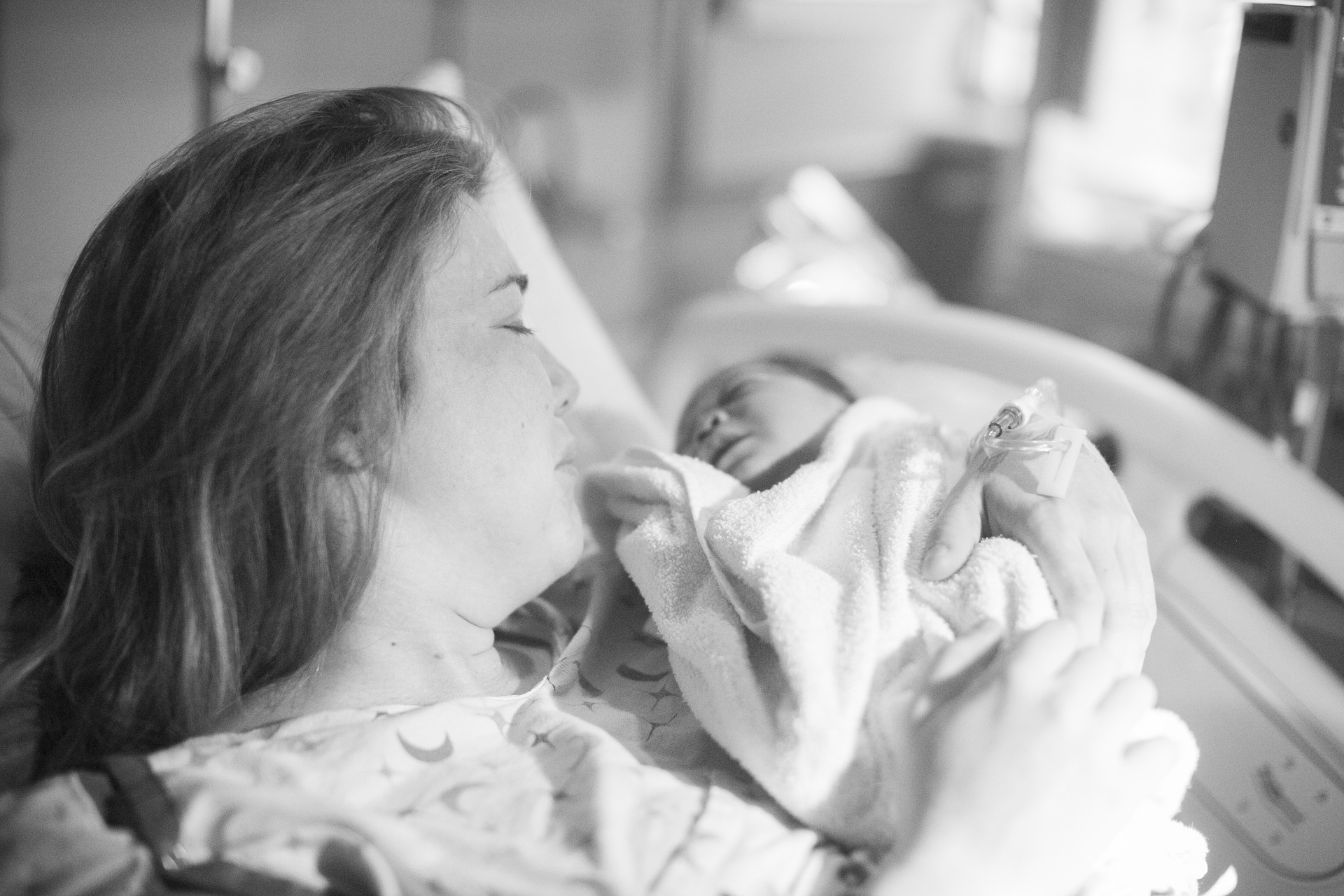In some pregnancies, induction in labour may need to be an option, for the safety of the health of both your baby and yourself. In this article, we have answered some of the most frequently asked questions about induction.

The Induction in Labour page answers the following questions:
1. What does induction in labour mean?
2. What are the general principles related to the induction in labour?
3. Why would you need a labour induction?
4. What happens if you are overdue?
5. What happens if you have certain health problems?
6. What happens if your waters break too early?
Induction in pregnancy questions answered
1. What does induction in labour means?
According to the World Health Organisation (WHO), induction in labour is the artificial stimulation process of the uterus in order to start labour. In other words, it is the stimulation of abdominal contractions before these start to develop a vaginal labour naturally. It has to be done under strict and specialised medical supervision. The use of this technique has increased in the past few years. In developed countries, almost 1 out of 4 births are artificially induced. A study by the WHO showed that 25% of all deliveries involve labour induction. However, in developing countries, the proportion is lower.
2. What are the general principles related to the induction in labour?
The WHO has published a guide called "WHO recommendations for induction of labour", in which they expose some principles that have to be followed in order to perform a labour induction. These principles are:
- It has to be done only when there is a medical indication, where the mother's or the baby's life are at risk. Its benefits must outweigh its potential dangers.
- Doctors will need to adapt the process to each woman´s condition, wishes, and preferences. This needs to be done in order to avoid any complications like the rupture of the uterus.
- It must be done with extreme caution and always under strict and specialised medical supervision.
- A failed induction will not be a determining factor to do a cesarean section.
- Most of the time, the labour induction will be the first option before a Cesarean Section.
- The induction of labour is not recommended for women with a normal pregnancy under week 41.
<style="text-align: left;">3. Why would you need a labour induction?
Doctors evaluate many things before doing this process. The most important thing they focus on is the mother's and baby's health. They check the size and weight of the baby, his position in the uterus, and his gestational age.
Doctors establish that an induction has to be done only when it is more dangerous for the baby to remain inside the uterus than Mum and baby undergoing the whole process of induction.
The most common conditions to practice an induced labour are: if you are overdue, if you have certain health problems or if your waters break.
4. What happens if you are overdue?
According to the WHO´s guide, the induction is recommended to all women with more than 41 weeks of pregnancy. If the labour is not induced, this could lead to a serious health problem for the baby known as fetal aging. You can always choose to continue with your pregnancy if you want a natural labour, but you will need to be checked medically, frequently.
The risks of waiting for a normal labour after week 41 are a little bit higher than a normal labour in week 41. The risk of a heavy blood loss increases a 1.7% after week 41. Remember, most of the time, continuing with your pregnancy or doing a labour induction is your choice.
5. What happens if you have certain health problems?
Sometimes, pregnancy could lead to some health problems. In certain cases, having your baby sooner than expected can be safer for both of you.
Some of the problems include those related to high blood pressure (preeclampsia), gestational diabetes or an important uterus´ infection like chorioamnionitis. Your doctor will also recommend induced labour in cases of placental detachment, oligohydramnios or pregnancy bleeding.
6. What happens if your waters break too early?
When your waters break 24 hours before the start of labour there is a huge risk of infection for you and your baby. The WHO recommends performing this procedure when this happens. The gestational age does not matter, if it happens before week 34, you will be encouraged to have an induction in labour or the team may carry out expectant management.
Expectant management is the continuous monitoring of your health conditions and your baby by all your healthcare professionals. This is done in order to try to continue your pregnancy while is safe for you and your baby. Before making a decision, they must discuss all the possible options with you.
7. How is labour induced?
The most common medications to induce labour are prostaglandins and oxytocin.
Prostaglandins are a set of substances derived from fats, which have many functions inside the body, one of the most important ones is to start the contraction process of the uterus during labour.
Prostaglandins can be administrated as a suppository in the vagina, orally or through an IV. The doses allow the doctor to have an exact control of the maturation of the cervix during labour.
On the other hand, oxytocin is a hormone produced by the brain that is also capable of inducing labour, increasing the strength of the uterine contractions. Its intravenous administration is recommended by the WHO when the prostaglandins are not available.
The problem with the use of oxytocin is that the labour can start pretty quickly, which can be really painful for the patient, usually needing pain medication. Its use must be enough to start the labour process, but if it does not happen, you may be eligible for a cesarean section.
8. Does labour induction have contraindications?
Most of the time, labour induction is a pretty secure process. However, according to the Society of Obstetricians and Gynaecologist of Canada (SOGC), there are some exceptions for its application:
- Patient has a placenta previa (the placenta is covering the cervix).
- Having a cord presentation, in which the umbilical cord lies between the baby and the cervix.
- The baby is not in the proper position.
- The mother had a previous cesarean section or another uterine surgery.
- The mother cannot physically have the baby through the vagina.
- Having genital herpes or pelvic structural deformities.
9. What are the risks of labour induction?
Sometimes the induction can fail first time around. Almost 25% of these do not start at the first attempt.
One important risk is the possible reduction in the heartbeat frequency of your baby. This can be caused by too many contractions or irregular ones due to the use of prostaglandins and oxytocin.
In the worst case scenario, your uterus can rupture. This is pretty unusual because it only happens if you had a previous Cesarean Section or another uterine surgery.
Some methods to induce labour can generate genital infections.




























































































